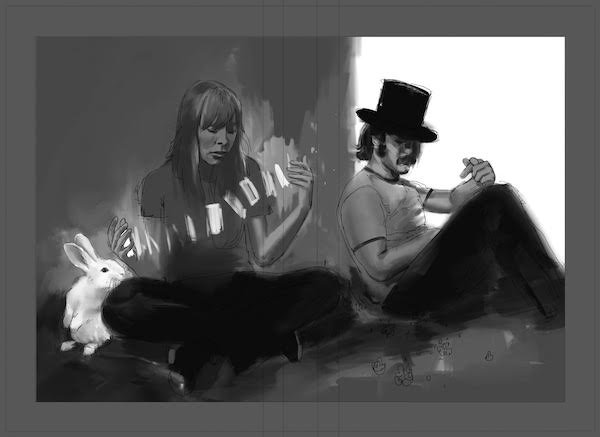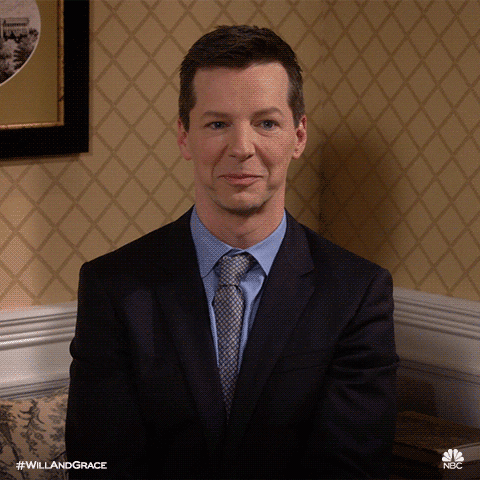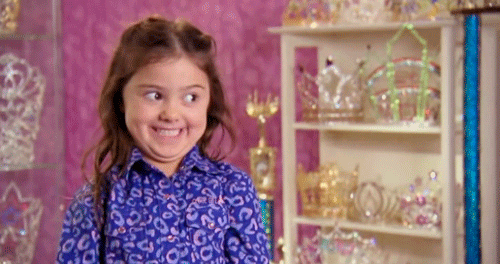Believe It Or Not I Have Thoughts On the Hot Rod: Part Two
/Here’s my no-spelling version of the Hot Rod force.
Actually… there’s not a simple explanation for how it works. While, in practice, the force is just about as straightforward as possible (it mimics something people do all the time) the description of the force will take some time. There are a few different small ideas working in concert. The biggest of these ideas is that instead of just asking them to name a number between one and six, you’re going to ask them to roll an imaginary die. This small change adds more substance to the selection of the number, and we’re going to exploit that substance in varying ways depending on what number they choose.
There are a few different ways this can go, and you’ll just have to kind of familiarize yourself with the possibilities. I’ll walk you through the different paths.
It starts after you’ve introduced the Hot Rod to them. Now, normally when I say I’ve “introduced my Hot Rod to someone,” that means I’ve pulled out my sweet cock for them to behold. But in this case (and for the rest of this post) I’m only referring to the bejeweled plastic stick.
So, you whip out your juicy, throbbing, rock-hard Hot Rod for your spectator, and you show them how it has six jewels on each side, and then you hold it in your right fist. See last Thursday’s post for more detail on this part of the effect.
Dialogue in bold.
Spectator response in italics.
Discussion in plain text.
Start
Phase One
I’m going to ask you to do something a little unusual. I want you to roll an imaginary dice and let me know what number comes up. (I use dice for the single noun as well, deal with it. That’s what most of my friends say. Maybe my friends are uneducated.)
So, for example…
With my left hand, I roll an imaginary die on the table.
I got a… five.
I say “five” as if I’m just tossing off any random number. Of course, I’m actually saying “five” in order to make it less likely for them to say that number.
This is one of the benefits of the “imaginary die” ploy. If I say, “I want you to name a number between 1 and 6. For example, 5,” that sounds like I think they’re a fucking moron. You don’t need to give an example of a number between 1 and 6. In that scenario, they might not know I’m trying to steer them away from 5, but I believe it will seem “off” on some level.
But rolling an imaginary die is something they’ve never done before. So giving them an example of what I’m asking from them feels more natural.
Go ahead… What did you get?
If they say Three or Four.
Okay. Do you want to start from the left side or the right side?
Again, see last Thursday’s post for how to handle this choice of side.
If they say Two
Okay. We’re going to use that little stick like a game board. Do you want to start on the left end or right end?
I open my hand as per the Either Side Ploy described in last Thursday’s post and place my finger on where they wanted to start.
And you rolled a two, yes?
I now count two MOVES from the starting position.
This is the next benefit of using an imaginary die: it allows us to relate the little stick to a tiny game board. How do board games work? How does Monopoly work? You start on a space, and you roll to see how many moves you’ll make. You don’t just roll a number and have your game piece dangling out in the ether, and then start counting the first space as One. No, you start somewhere, and then count the number of moves the die tells you too.
By placing your finger on the starting stone then confirming the number of moves, this way of counting feels completely natural.
If they say One, Five, or Six
Okay, so you get the idea, yeah?
At the start of phase one, I say, “For example.”
If they roll a 2, 3, or 4, then only my roll of 5 was the “example.”
If they roll a 1, 5, or 6, then this whole first phase has been the “example.”
In which case, I am now going to give them more information, and we’re going to do the dice roll “for real.”
Probably 80+ percent of the time—maybe even 90+ percent—you won’t need the second phase because people will say 2, 3, or 4. But to make this force 100%, you can move on to Phase Two if you need it.
Phase Two
Alright, here’s how it’s going to work. We’re going to use that little stick like a game board. We’re both going to roll our dice, and then we’ll use the numbers that come up to determine which jewel we’ll use going forward.
I’ll roll first.
I got… a… three.
You always get a three.
What did you get?
If they say One.
Okay, so that’s a total of…?
Four.
And do you want to start on the left or right side?
If they say Two
Okay, now you have a few options. You can stick with the number you rolled. Or, if you want to throw me off, you can switch for my number. Which do you want to use?
Okay, and do you want to start on the left side or the right side?
If they say Three
Oh, so you got the same thing as me? Okay. That going to limit your options, but I want you to keep your number, so I’ll roll again. This time I got a…uhm… Four, I guess.
So you have some options here. We can use your number. Or we can use my number. Or we can add our numbers together and count back and forth along the stick.
Okay, final decision, should our starting position be on the left end or the right end?
If they say they want to use their number (3) or your number (4) you know what to do.
If they say, add them together, then you will need to count 7.
To do this, you’ll start at the end furthest away from your force stone and count the number of moves (as we did when we were counting to the number two).
So, if the red stone was the force stone, you’d count.
If they say Four
The same as the last one. You offer them the choice of using your number or their number or adding them together.
If they say Five
Giving us a total of…?
Eight
Okay, final decision. Do you want to start from the left or the right side?
To count Eight, you will count back and forth, starting on the end furthest from the force stone.
If they say Six
Giving us a total of…?
Nine
Okay, final decision. Do you want to start from the left or the right side?
To count Nine, you will count back and forth, starting on the end closest to the force stone.
No matter which number you end up counting, you always point out how if they had rolled a different number it would have led you to a different stone.
And there you have it. No spelling. You always use the number the spectator names (except for when they don’t want you to). And you always name your number first, so it doesn’t seem like you could be controlling anything that way.
You may realize that you could just do Phase Two and leave out Phase One altogether. That may be the better way to go. I haven’t decided yet. I sort of prefer just to have it as a failsafe.
If it reads as complex, it’s really not. There’s certainly more to it than “I’m going to spell your number.” But it’s not that there’s much more process here, there’s just more apparent free choices for the spectator. And that’s never a bad thing in a trick that relies on a force.





























